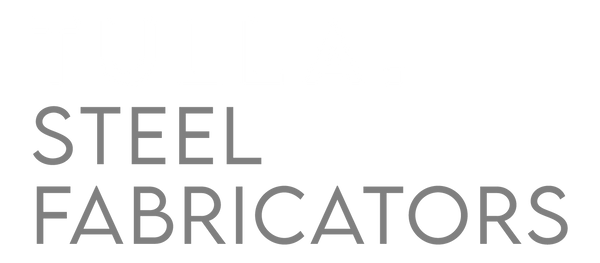What is CNC Cutting and How Does it Benefit Steel Fabrication?
Share
When it comes to steel fabrication, getting things right down to the millimetre isn’t a luxury; it’s a must. Whether you’re working on structural beams, custom brackets, or artistic steel features, accuracy, speed, and consistency all come into play. That’s where CNC cutting stands out.
CNC (Computer Numerical Control) cutting is a technology that uses computer programmes to guide cutting tools through steel with precision. It’s transformed how fabricators work, making the process faster, more reliable, and far less reliant on manual effort.
This post walks through what CNC metal cutting is, how it works, the types of cutting involved, and why it’s become such a core part of modern fabrication work.
How CNC Cutting Works
Let’s start with the basics. CNC cutting is a process where computers take control of cutting tools. Instead of relying on hand-guided techniques, it turns digital designs into real parts with remarkable consistency.
Here’s what the typical process looks like:
- A digital design is created using CAD (Computer-Aided Design) software.
- That design is converted into a G-code file, which provides machine-readable instructions.
- The CNC machine reads this code and moves the cutting tool exactly where it needs to go, down to fractions of a millimetre.
This method allows for consistent results across small or large production runs, cutting down on waste and rework.
<A labelled diagram showing CAD design to CNC machine in action.>
Common Types of CNC Cutting in Steel Fabrication
Different jobs call for different tools. Here’s a look at the four most commonly used CNC cutting methods for steel.
CNC Laser Cutting
CNC laser cutting uses a focused beam of light to melt and cut through steel. It’s known for producing smooth edges and detailed shapes with minimal clean-up required.
- Strengths: High accuracy, fine detailing, low heat distortion.
- Best for: Thin to medium-gauge steel, architectural finishes, or intricate part designs.
Interested in learning more about this method? Visit our laser cutting page.
CNC Plasma Cutting
Plasma cutting uses a superheated ionised gas to slice through metal quickly and efficiently. It’s ideal for thicker steel and high-speed output.
- Strengths: Can cut thicker steel with ease, affordable and fast.
- Best for: Structural steel, heavy plates, industrial fabrication.
Want to explore this technique further? Read more about plasma cutting.
CNC Flame Cutting (Oxy-Fuel Cutting)
Flame cutting uses a torch fed by oxygen and a fuel gas to cut extremely thick steel. While not as precise as laser or waterjet, it’s the go-to for heavy-duty jobs.
- Strengths: Capable of cutting through the thickest steel sections.
- Best for: Large plates, base structures, and heavy components.
CNC Waterjet Cutting
Waterjet cutting uses a high-pressure stream of water mixed with abrasive materials to cut through steel without heat. It’s perfect for jobs where temperature control is important.
- Strengths: No heat-affected zones, less material warping.
- Best for: Sensitive steel parts, mixed materials, or avoiding thermal damage.
Why CNC Cutting Works So Well for Steel Fabrication
CNC cutting isn’t just about replacing manual effort; it’s about working smarter, with better results. Here are the main reasons CNC has become a standard in steel fabrication:
Consistent Accuracy
CNC metal cutting removes the guesswork. Cuts are identical across every batch, even if you're making hundreds of identical parts. This saves time, reduces waste, and leads to cleaner fits when it’s time for welding or assembly.
Faster Turnaround
Once set up, CNC machines can operate at high speed without sacrificing accuracy. That means your project moves forward faster, especially on repeat work or batch fabrication.
Lower Labour Demands
Because CNC machines are largely automated, they need fewer hands-on hours from fabricators. Operators still oversee the process, but the bulk of the cutting work is handled by the machine.
Safer for the Team
Manual cutting methods involve sparks, sharp tools, and close contact. CNC keeps the operator at a safe distance, reducing the risk of injury.
Intricate Designs Made Simple
Whether it’s detailed cut-outs or complex geometry, CNC laser cutting and waterjet technology make what used to be difficult or near-impossible much easier.
Less Waste, Lower Costs
Precise nesting (the arrangement of parts to reduce scrap) and cleaner cuts reduce offcuts and rework. Better material use means better cost control.
Repeatable Results
If you’re cutting ten identical parts or ten thousand, the outcome is the same every time. CNC is about dependability at scale.
Where CNC Cutting Fits into Everyday Fabrication
CNC cutting plays a role in almost every steel fabrication project, whether it’s a one-off custom part or a large-scale production run. In commercial construction, it’s used to produce structural steel components like beams, columns, and brackets, cut exactly to spec. When it comes to machinery or transport equipment, CNC helps create heavy-duty parts that need to withstand tough working conditions.
CNC cutting is also widely used in the automotive and aerospace sectors, shaping panels, brackets, and fittings that demand high consistency and tight tolerances. It's even used in creative and architectural work, think intricate signage or decorative steel features that bring design ideas to life.
For builders, engineers and designers needing custom fabrication, CNC cutting makes it easy to turn concepts into clean, ready-to-use steel components. Whether it's functional or aesthetic, CNC brings accuracy and repeatability to the job.
Why CNC Cutting is Worth Considering
CNC cutting has become a mainstay in steel fabrication for good reason. It gives fabricators the ability to work faster, with tighter tolerances and fewer errors. Whether you're cutting thin architectural steel or thick load-bearing plates, there's a CNC method that fits the job.
At Tulla Steel Fabricators, we work with a range of CNC laser cutting, plasma cutting, and flame cutting equipment to handle both standard and custom steel fabrication projects. Our team helps match the right cutting method to your needs so you get strong, accurate results every time.
